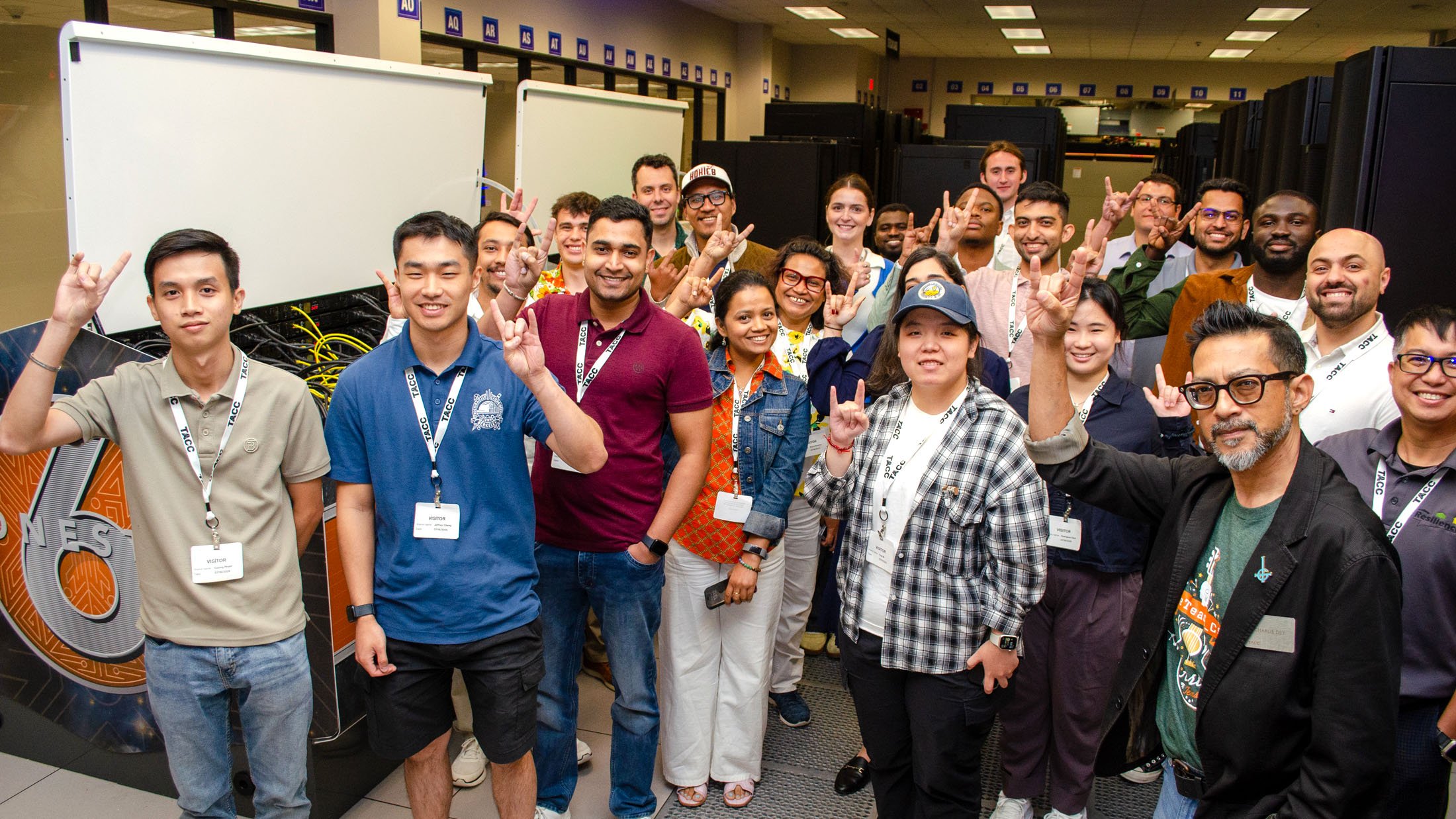The NHERI SPARC program, co-hosted by the NHERI SimCenter and DesignSafe, was held in person on July 16-18, 2025, at the Texas Advanced Computing Center (TACC) located at the University of Texas at Austin. The event brought together a diverse group of researchers focused on solving important challenges in natural hazards and infrastructure resilience. A strong, personalized educational focus fostered hands-on collaboration, knowledge exchange, and advancement in the use of computational simulation applications.
SPARC participants, composed of graduate students, post-doctoral researchers, and early career faculty, arrived from across the US with the intent of leveraging SimCenter tools to accelerate and scale their research on risks from natural hazards. A diverse set of topics with potential for broad societal impact were featured during the event:
- Improving the models for transmission towers and their influence on outages and resilience of electric power infrastructure to wind events.
- Investigating various policies for retrofitting residential buildings, bridges, and components of other lifelines to mitigate the impact of earthquakes, floods, and hurricanes.
- Evaluating and calibrating detailed models for simulating disaster impact by comparing them to ground-truth data from experimental tests and multi-year longitudinal studies.
- Considering the complex interactions between the natural and built environments for the simulation of stormwater management, coastal erosion, and compound flooding.
This diversity in research topics was matched by the wide scope of methods and creative simulation approaches represented at the workshop. Participants are pushing the envelope in areas such as:
- High-fidelity digital twin development to characterize the vulnerability of transmission towers and low-rise residential homes using computational fluid dynamics and finite element modeling.
- Preserving high-fidelity, probabilistic modeling capabilities by training surrogate models for regional-scale simulations.
- Introducing enhanced fragility functions to regional analysis to capture the impact of specific retrofits and design decisions or to model the impact of a series of damaging events over time.
- Simulating the impact of challenging phenomena such as non-synoptic winds like tornadoes and downbursts and wave action in an experimental flume or coastal dunes.
- Generate large-scale regional hurricane wind, storm surge, and earthquake events to investigate city- and state-wide impact.
- Collecting and combining data from various sources to create realistic representations of the built environment for large regions.
- Considering the interaction between models of various systems during the recovery phase after disasters to simulate more realistic impacts for policies and mitigation actions.
Researchers engaged with SimCenter tools, i.e., R2D, Hydro-UQ, WE-UQ, quoFEM, Pelicun, and BRAILS++, using their own models and datasets, and leveraging the scalability and power of High-Performance Computing (HPC). SimCenter staff providing guidance included Adam Zsarnóczay, Abiy Melaku, Justin Bonus, Aakash Bangalore Satish, and Barbaros Cetiner.
By the end of the event, participants accomplished the following:
- Utilized machine learning and advanced simulation methods to generate critical inputs for risk modeling, including detailed inventories of the built environment with BRAILS++ and site-specific hazard characterizations like hurricane wind fields with R2D.
- Explored uncertainty quantification applications using quoFEM to perform Bayesian model calibration, and propagate uncertainties through complex finite element models, and created digital twins to run virtual experiments with Hydro-UQ.
- Leveraged high-performance computing resources with DesignSafe and WE-UQ to conduct large Computational Fluid Dynamics (CFD) simulations, enabling detailed investigations of complex wind effects on buildings and critical infrastructure.
- Developed novel regional-scale risk assessment workflows for a variety of hazards and infrastructure systems—including transportation, electric power, and stormwater networks—by integrating custom vulnerability models in Pelicun with advanced natural hazard event data within the R2D application.
“The practical value of spending three days in person with a group of highly motivated researchers cannot be overstated,” said Adam Zsarnóczay, SimCenter Associate Director of Research Outreach. “We focused on providing pertinent knowledge that SPARC researchers can immediately apply—they already made tangible progress in their own research by adjusting their designs and introducing or enhancing the simulations they used. We look forward to working with SPARC participants as they further incorporate SimCenter tools into their studies. As researchers apply what they gained from SPARC, they are positioned to deliver meaningful advances in disaster mitigation, preparedness, and infrastructure resilience.”

